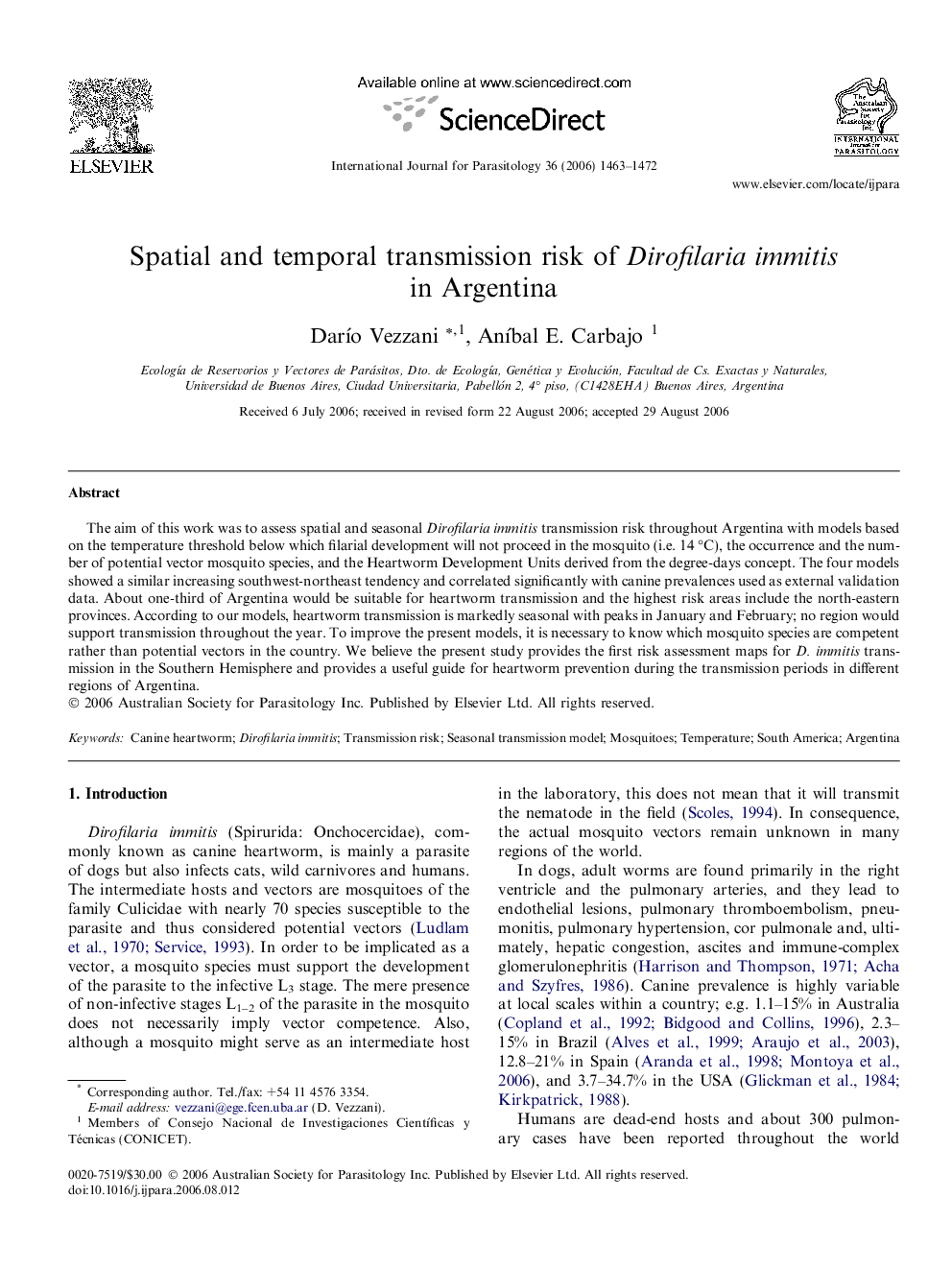| Article ID | Journal | Published Year | Pages | File Type |
|---|---|---|---|---|
| 2436873 | International Journal for Parasitology | 2006 | 10 Pages |
The aim of this work was to assess spatial and seasonal Dirofilaria immitis transmission risk throughout Argentina with models based on the temperature threshold below which filarial development will not proceed in the mosquito (i.e. 14 °C), the occurrence and the number of potential vector mosquito species, and the Heartworm Development Units derived from the degree-days concept. The four models showed a similar increasing southwest-northeast tendency and correlated significantly with canine prevalences used as external validation data. About one-third of Argentina would be suitable for heartworm transmission and the highest risk areas include the north-eastern provinces. According to our models, heartworm transmission is markedly seasonal with peaks in January and February; no region would support transmission throughout the year. To improve the present models, it is necessary to know which mosquito species are competent rather than potential vectors in the country. We believe the present study provides the first risk assessment maps for D. immitis transmission in the Southern Hemisphere and provides a useful guide for heartworm prevention during the transmission periods in different regions of Argentina.
